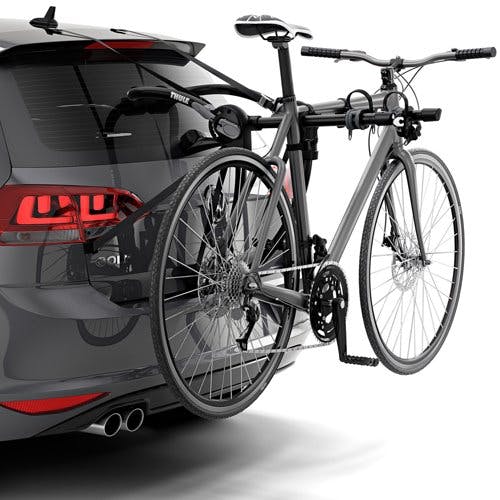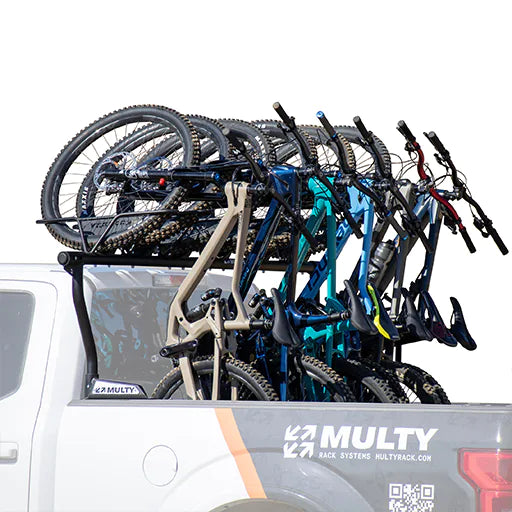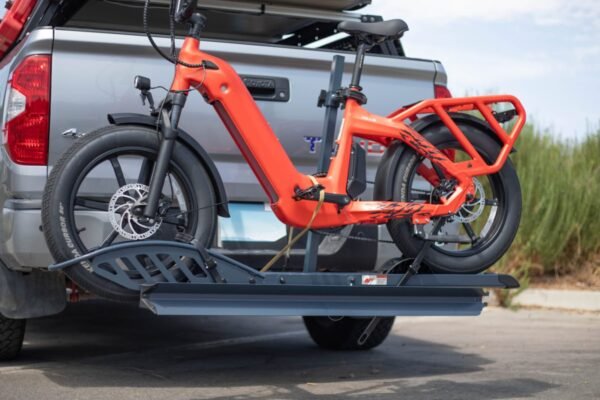Check Out the Different Kinds Of Bike Shelf and Their Practical Applications for Biking Lovers
The variety of bike Racks available today accommodates the varied requirements of cycling enthusiasts. From freestanding to wall-mounted options, each design provides distinct benefits for storage and transport. Portable Racks likewise supply adaptability for those on the step. Picking the optimal type requires mindful consideration of specific demands. Understanding these variables can make a significant distinction in both ease and safety for bicyclists. What are the vital considerations when choosing a bike rack?
Comprehending Bike Rack Enters
Different kinds of bike Racks accommodate the varied demands of bikers. Amongst one of the most typical are freestanding shelfs, often located in city areas, which allow multiple bikes to be protected in a portable space. Wall-mounted Racks offer those with restricted floor area, supplying an effective solution for home storage space. In addition, mobile bike shelfs, designed for ease of transport, appeal to bikers who often travel.

Hitch-Mounted Bike Racks
Hitch-mounted bike Racks provide a useful solution for carrying bikes, yet understanding their installment procedure is essential for efficient usage. Users must additionally think about the weight ability of these Racks to ensure security and stability while traveling. In addition, compatibility with various lorry types plays a significant role in identifying the best shelf for specific demands.
Installment Refine Summary
When choosing a hitch-mounted bike rack, recognizing the installation procedure is important for guaranteeing safety and security and convenience. First, the user needs to confirm compatibility between the rack and the car's drawback receiver. The majority of Racks are made for either 2-inch or 1.25-inch receivers. After selecting the suitable rack, the installment starts with protecting the rack into the hitch receiver and tightening up the drawback pin or bolt to stop motion. Correct alignment is crucial to ascertain the rack does not block tail lights or license plates. Once installed, it is a good idea to inspect for security by applying small stress to the rack. Complying with the maker's instructions will ensure an effective installation, promoting a risk-free cycling experience on the roadway.
Weight Ability Considerations

Compatibility With Vehicle Types
Choosing the ideal bike rack includes verifying compatibility with different car kinds. Hitch-mounted bike Racks are made to affix to the rear hitch receiver of a car, making them ideal for a large range of trucks, cars and trucks, and suvs. It is vital to examine the hitch course and weight capability to verify a correct fit. A lot of hitch-mounted Racks work with 1.25-inch and 2-inch receivers, accommodating automobiles outfitted with suitable pulling abilities. In addition, customers should consider their vehicle's elevation and style, as some Racks might obstruct rear gain access to or require extra clearance. Eventually, recognizing car requirements validates that cycling enthusiasts can safely carry their bikes without compromising safety and security or functionality.
Trunk-Mounted Bike Racks
Trunk-mounted bike Racks provide a functional service for bikers seeking an efficient method to transport their bikes. Understanding the setup procedure is vital for perfect use, as incorrect configuration can cause security worries. Additionally, thinking about the weight ability of these Racks assurances that they can securely hold the bikes without risk of damage or failing throughout transit.
Installment Process Introduction
Several cycling fanatics appreciate the convenience of trunk-mounted bike Racks for their simplicity of use and convenience. The installation Hitch Bike Rack process commonly begins with unloading the shelf and familiarizing oneself with its parts. A lot of Racks include adjustable bands and hooks made to protect them to the lorry's trunk or hatch. Individuals must validate the shelf is located properly, straightening it with the lorry's contours for security. Following the manufacturer's directions, the straps are after that tightened firmly, assuring a snug fit. It's essential to examine that the shelf does not obstruct the automobile's lights or permit plate. Validating that all connections are secure before loading bikes is vital for safe transport. Proper installment boosts both security and performance during biking trips.
Weight Capacity Considerations
When thinking about a bike shelf for delivering bicycles, weight capability is a crucial variable that can not be neglected. Trunk-mounted bike Racks commonly have weight restrictions that vary relying on the design and style. It is vital for users to inspect these specifications to ensure they do not go beyond the advised weight, as doing so can compromise both security and car honesty. The majority of trunk-mounted Racks can support one or two bikes, with a mixed weight capability ranging from 70 to 120 extra pounds. Cyclists ought to likewise take into consideration the weight of their bikes, specifically if they possess much heavier models like electric bikes. Effectively matching the rack's weight capacity with the bikes' weights ensures a safe and risk-free transport experience.
Roof-Mounted Bike Racks
Roof-mounted bike Racks use a structured option for transferring bikes, giving cyclists with the advantage of optimizing freight space. These Racks are developed to hold bikes safely atop the lorry, enabling easy access to the rear of the automobile and preventing obstructions to the license plate or tail lights. They are ideal for individuals that frequently take a trip with their bikes, as they can accommodate numerous bike styles and dimensions.
Setup normally involves attaching the shelf to the lorry's bars, guaranteeing a secure and secure fit. Roof-mounted Racks are commonly wind resistant and light-weight, which can result in improved gas efficiency compared to other sorts of shelfs. Customers must think about the elevation of their automobile when packing and unloading bikes, as well as potential difficulties when going into garages or low-clearance locations - Bike Rack. Generally, roof-mounted bike Racks provide a functional and efficient alternative for serious bikers on the go
Wall-Mounted Bike Racks
Wall-mounted bike Racks provide an effective solution for bikers looking for to optimize limited space while securely storing their bikes. These Racks are ideal for city residents or those with little garages, as they raise bikes off the ground and utilize upright room. Made from durable products, wall-mounted options can accommodate various bike kinds, consisting of crossbreed, mountain, and roadway bicycles.
Setup is simple, enabling customers to place them in garages, cellars, or also outside rooms. Numerous designs permit one or multiple bikes, making them flexible for private or family members usage. In addition, some wall-mounted Racks featured incorporated locks or safety and security functions to discourage theft, enhancing satisfaction for bicyclists.
Mobile Bike Racks
Mobile bike Racks use bikers a hassle-free and versatile remedy for transferring their bicycles. These Racks are designed for simple installation and removal, making them optimal for those who need to often switch over between places or lorries. Compact and normally lightweight, mobile bike Racks can be conveniently stored in a trunk or garage, easing the problem of irreversible installations.
There are different kinds of portable bike shelfs, including hitch-mounted, trunk-mounted, and roof-mounted choices, each accommodating different car types and biker choices. Hitch-mounted Racks offer stability and availability, while trunk-mounted Racks are often much more budget-friendly and functional. Roof-mounted Racks are fantastic for maximizing cargo area however might call for some lifting.
Picking the Right Bike Rack for Your Demands
How can one identify the most effective bike shelf to suit their details biking demands? Determining the ideal bike rack involves reviewing a number of factors. One have to consider the type of car made use of for transport, as Racks are developed for different installing systems, such as roofing system, trunk, or drawback. Next, the variety of bikes to be lugged is important; some Racks suit just one, while others can hold multiple bikes efficiently. Additionally, figuring out the weight and structure design of the bikes is substantial, as particular Racks are much better fit for heavier or distinctly shaped bikes. Desired use needs to be taken right into account; frequent travelers may like an extra mobile option, while occasional individuals might focus on simplicity and convenience of setup. By meticulously considering these considerations, people can pick a bike shelf that meets their requirements and improves their cycling experience.

Frequently Asked Questions
Can Bike Racks Accommodate Different Bike Sizes and Styles?
Bike Racks differ in design, allowing accommodation for various bike dimensions and styles. Some Racks include flexible components, while others are particularly tailored for particular bicycles, ensuring protected storage and easy accessibility despite the bike's requirements.
Exactly how Do I Correctly Protect My Bike on a Shelf?
To appropriately protect a bike on a shelf, one ought to guarantee the framework and wheels are tightly attached utilizing locks or bands, checking for security and avoiding movement during transportation to stay clear of damages.
Are Bike Racks Easy to Eliminate and mount?
Bike Racks differ in installation complexity, yet many are made for user-friendliness. Removable models usually use straightforward configuration and removal, while long-term installations might call for devices and even more time, depending on the certain design.

What Materials Are Bike Racks Normally Made From?
Bike Racks are normally made from products such as plastic, aluminum, and steel. Bike Rack. Steel gives resilience and stamina, while light weight aluminum supplies light-weight mobility. Plastic alternatives are typically designed for ease of usage and price
Do Bike Racks Affect Fuel Efficiency When Driving?
When driving is significant, the inquiry of whether bike Racks influence gas efficiency. Studies show that bike Racks can raise wind resistant drag, potentially resulting in lowered fuel performance, specifically at higher speeds or with added weight.
After picking the suitable rack, the setup starts with protecting the rack right into the drawback receiver and tightening the drawback pin or screw to avoid motion. Roof-mounted Racks are light-weight and typically wind resistant, which can lead to boosted gas performance compared to other types of racks. Hitch-mounted Racks supply security and ease of access, while trunk-mounted Racks are frequently extra budget-friendly and versatile. Next, the number of bikes to be lugged is necessary; some Racks accommodate just one, while others can hold several bikes efficiently. Bike Racks differ in layout, making it possible for accommodation for different bike sizes and designs.